

The Halls of Amenti. The Atlantean Society. The Great Flood. Thoth, the Atlantean. Forward to Emerald Tablet I. The Papyrus of Ani. Meeting God. Book of Dead Plate 4. THE BOOK OF THE DEAD The Papyrus of Ani by E.
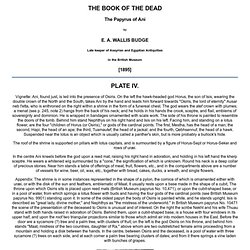
A. WALLIS BUDGE Late keeper of Assyrian and Egyptian Antiquities in the British Museum [1895] PLATE IV. Plate 3 Judgement. THE BOOK OF THE DEAD The Papyrus of Ani byE.
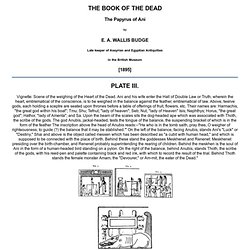
A. WALLIS BUDGELate keeper of Assyrian and Egyptian Antiquitiesin the British Museum[1895]PLATE III. Vignette: Scene of the weighing of the Heart of the Dead. Ani and his wife enter the Hall of Double Law or Truth, wherein the heart, emblematical of the conscience, is to be weighed in the balance against the feather, emblematical of law. Above, twelve gods, each holding a sceptre are seated upon thrones before a table of offerings of fruit, flowers, etc. Text: [Chapter XXXB.]
ANCIENT EGYPT : The Ten Keys of Hermes Trismegistos. I, King Pepi, am THOTH, the mightiest of the gods ...
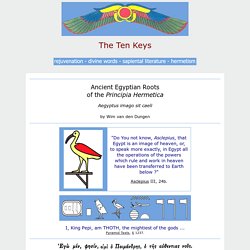
Pyramid Texts, § 1237. I, said he, am POIMANDRES, the Mind of the Sovereignty. Corpus Hermeticum (CH), Libellus I (Poimandres), Book 1.2 "Do You not know that You have become a God, and son of the One, even as I have ? " Imhotep, Doctor, Architect, High Priest, Scribe and Vizier to King Djoser. About Egyptian Pyramids by Jimmy Dunn Of the non royal population of Egypt, probably one man is known better than all others.

So successful was Imhotep (Imhetep, Greek Imouthes) that he is one of the world's most famous ancients, and his name, if not his true identity, has been made even more famous by various mummy movies. Today, the world is probably much more familiar with his name than that of his principal king, Djoser. Imhotep, who's name means "the one that comes in peace". existed as a mythological figure in the minds of most scholars until the end of the nineteenth century when he was established as a real historical person. He was the world's first named architect who built Egypt's first pyramid, is often recognized as the world's first doctor, a priest,. scribe, sage, poet, astrologer, and a vizier and chief minister, though this role is unclear, to Djoser (reigned 26302611 BC), the second king of Egypt's third dynasty.
History - Eighteenth Dynasty - Karnak, Sphinx, Aswan. Details of the fall of Avaris are given in an inscription engraved on the wall of a tomb at El-Kab belonging to a warrior named 'Ahmose, Son of Abana.' Early in life this person replaced his father Baba, who had served under Sekenenre'.
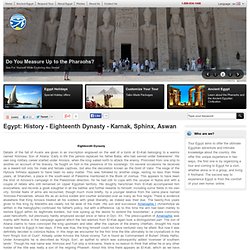
His own long military career started under Amosis, when the king sailed north to attack the enemy. Promoted from one ship to another on account of his bravery, he fought on foot in the presence of his sovereign. On several occasions he received as a reward not only his male and female captives, but also the decoration known as the Gold of Valor. The siege of the Hyksos fortress appears to have been no easy matter. Looking back over what the contemporary sources have revealed concerning the humiliating Hyksos occupation we find Manetho's account as retailed by Josephus to contain truth and falsity in almost equal measure. Ancient Egyptian Beauty - Nefertem.
Volume I, Number 5 October 1st, 2000 The Egyptian pantheon is a particularly huge and fluid one, with a wide array of deities floating in and out of one another's myths.
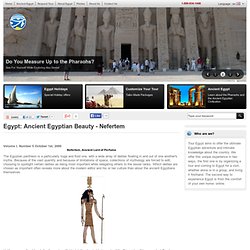
Because of the vast quantity and because of limitations of space, collections of mythology are forced to edit, choosing to spotlight certain deities as being most important while relegating others to the lesser ranks. Which deities are chosen as important often reveals more about the modern editor and his or her culture than about the ancient Egyptians themselves. Until very recently at least, the favored spotlighted deities tended to be gods of the "big picture," transcendent Creator Spirits, remote and sometimes aloof holy beings involved in large conceptual issues: the arts of civilization, for instance, the creation of the world or the birth of agriculture.
Root Concepts of God in Hermetism.